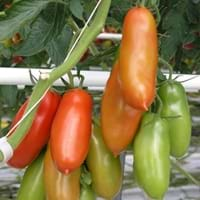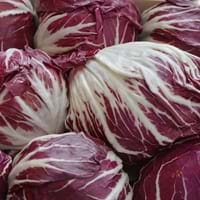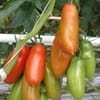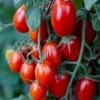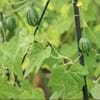Life Span
Perennial
Perennial
Origin
Mexico, Central America, South America
Europe, Mediterranean, Northern Africa, Western Asia
Types
Round tomatoes, Cluster tomatoes, Heirloom tomatoes, Roma tomatoes
red radicchio, bicolored radicchio, (green radicchio
Habitat
Temperate Regions
Mediterranean region
USDA Hardiness Zone
11-15
8-12
Sunset Zone
A1, A2, A3, H1, H2, 1a, 1b, 2a, 2b, 3a, 3b, 4, 5, 6, 7, 8, 9, 10, 11, 12, 13, 14, 15, 16, 17, 18, 19, 20, 21, 22, 23, 24
A1, A2, A3, H1, H2, 1a, 1b, 2a, 2b, 3a, 3b, 4, 5, 6, 7, 8, 9, 10, 11, 12, 13, 14, 15, 16, 17, 18, 19, 20, 21, 22, 23, 24
Habit
Vining/Climbing
Clump-Forming
Flower Color
Yellow
Sky Blue
Flower Color Modifier
Bicolor
Bicolor
Fruit Color
Red, Orange Red
Brown
Leaf Color in Spring
Green, Dark Green
Green
Leaf Color in Summer
Green, Dark Green
Green
Leaf Color in Fall
Green, Dark Green
Green
Leaf Color in Winter
Green, Dark Green
Green
Leaf Shape
Lobed
Lanceolate
Plant Season
Spring, Summer, Fall
Summer
Sunlight
Full Sun
Full Sun, Partial Sun
Type of Soil
Loam, Sand
Loam, Sand
The pH of Soil
Neutral
Acidic, Neutral, Alkaline
Soil Drainage
Well drained
Well drained
Bloom Time
Indeterminate
Early Summer, Summer, Late Summer
Tolerances
Drought
Drought
Where to Plant?
Container, Ground
Container, Ground
How to Plant?
Rooted stem cutting, Seedlings
Seedlings
Plant Maintenance
Medium
Medium
Watering Requirements
Average Water Needs, Requires regular watering
Do Not over Water, Requires regular watering
In Summer
Lots of watering
Lots of watering
In Spring
Moderate
Moderate
In Winter
Average Water
Average Water
Soil pH
Neutral
Acidic, Neutral, Alkaline
Soil Type
Loam, Sand
Loam, Sand
Soil Drainage Capacity
Well drained
Well drained
Sun Exposure
Full Sun
Full Sun, Partial Sun
Pruning
Remove damaged leaves, Remove dead branches, Remove dead leaves
Remove damaged leaves, Remove dead branches, Remove dead leaves
Fertilizers
All-Purpose Liquid Fertilizer
All-Purpose Liquid Fertilizer
Pests and Diseases
Beetles, Worms
Aphids, Bacteria, Damping-off, Darkling beetles, Downy mildew, fungus, Red blotch
Plant Tolerance
Drought, Heat And Humidity
Drought
Flower Petal Number
Single
Not Available
Fragrant Bark/Stem
Yes
No
Foliage Texture
Medium
Medium
Foliage Sheen
Matte
Matte
Attracts
Beetles, Butterflies
Aphids, Beetles
Allergy
allergic reaction
Food Allergy
Aesthetic Uses
Not Used For Aesthetic Purpose
Not Used For Aesthetic Purpose
Beauty Benefits
Not Available
Not Available
Environmental Uses
Air purification
Air purification
Medicinal Uses
Cardiovascular problems, Detoxification, Liver problems, osteoporosis
Antioxidants, Digestion problems, Vitamin K, Weight loss
Part of Plant Used
Fruits
Leaves
Other Uses
Used As Food, Used for its medicinal properties
Used as a nutritious food item, Used As Food, Used for its medicinal properties
Used As Indoor Plant
Yes
Yes
Used As Outdoor Plant
Yes
Yes
Garden Design
Container, Edible, Herb, Vegetable, Vine
Container, Edible, Herb / Vegetable, Mixed Border
Botanical Name
LYCOPERSICON esculentum 'San Marzano Redorta'
CICHORIUM intybus
Common Name
Plum Tomato, Tomato
Radicchio, Wild Chicory
In Hindi
बेर टमाटर
Radicchio
In German
Eiertomate
Radicchio
In French
Plum Tomato
Radicchio
In Spanish
Tomate ciruela
achicoria
In Greek
Plum ντομάτα
ραντίτσιο
In Portuguese
tomate ameixa
radicchio
In Polish
Plum Tomato
radicchio
In Latin
Augue Nullam consectetur
Radicchio
Phylum
Magnoliophyta
Magnoliophyta
Class
Magnoliopsida
Magnoliopsida
Order
Solanales
Asterales
Family
Solanaceae
Asteraceae
Genus
Solanum L
Cichorium
Clade
Angiosperms, Asterids, Eudicots
Not Available
Tribe
Not Available
Not Available
Subfamily
Not Available
Not Available
Number of Species
Not Available
Not Available
Season and Care of San Marzano Tomato and Radicchio
Season and care of San Marzano Tomato and Radicchio is important to know. While considering everything about San Marzano Tomato and Radicchio Care, growing season is an essential factor. San Marzano Tomato season is Spring, Summer and Fall and Radicchio season is Spring, Summer and Fall. The type of soil for San Marzano Tomato is Loam, Sand and for Radicchio is Loam, Sand while the PH of soil for San Marzano Tomato is Neutral and for Radicchio is Acidic, Neutral, Alkaline.
San Marzano Tomato and Radicchio Physical Information
San Marzano Tomato and Radicchio physical information is very important for comparison. San Marzano Tomato height is 180.00 cm and width 90.00 cm whereas Radicchio height is 61.00 cm and width 30.50 cm. The color specification of San Marzano Tomato and Radicchio are as follows:
San Marzano Tomato flower color: Yellow
San Marzano Tomato leaf color: Green and Dark Green
Radicchio flower color: Sky Blue
- Radicchio leaf color: Green
Care of San Marzano Tomato and Radicchio
Care of San Marzano Tomato and Radicchio include pruning, fertilizers, watering etc. San Marzano Tomato pruning is done Remove damaged leaves, Remove dead branches and Remove dead leaves and Radicchio pruning is done Remove damaged leaves, Remove dead branches and Remove dead leaves. In summer San Marzano Tomato needs Lots of watering and in winter, it needs Average Water. Whereas, in summer Radicchio needs Lots of watering and in winter, it needs Average Water.
